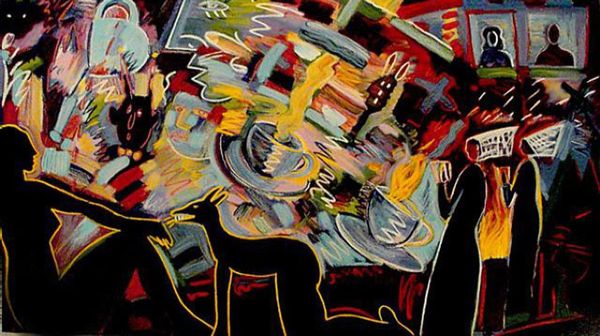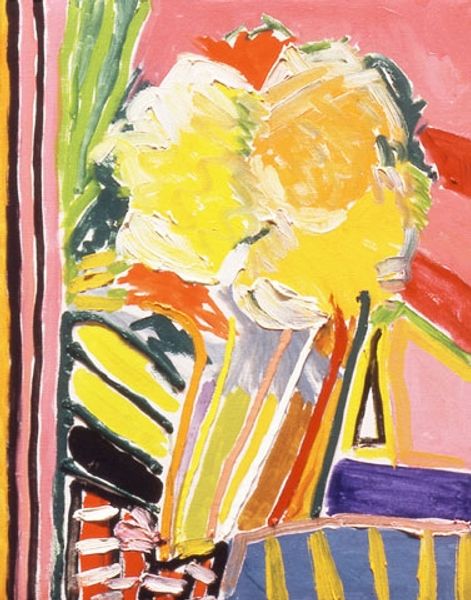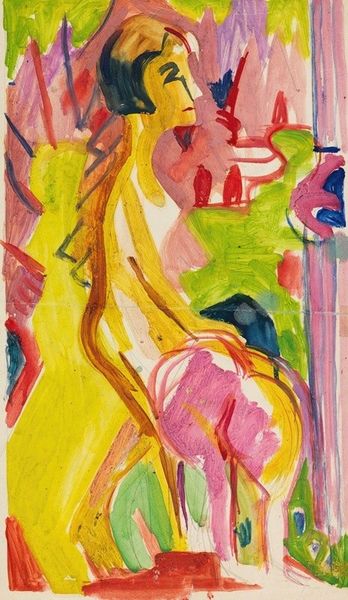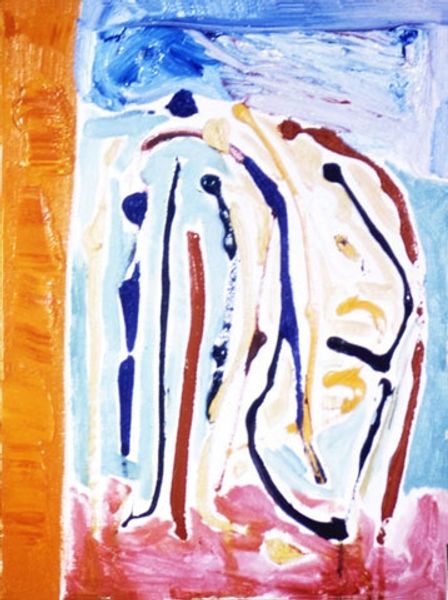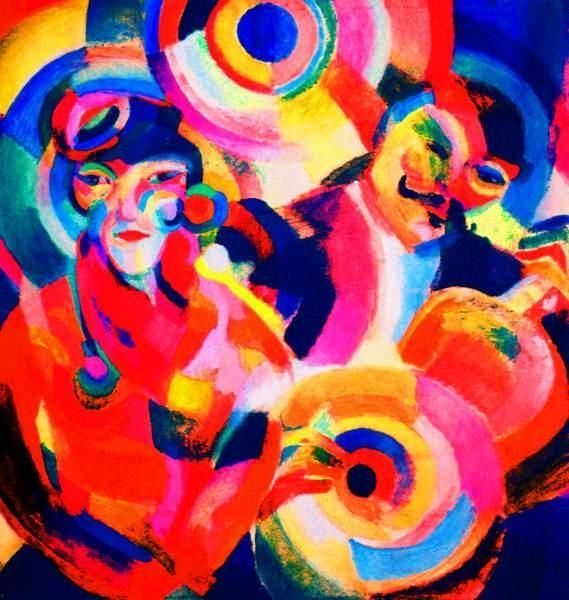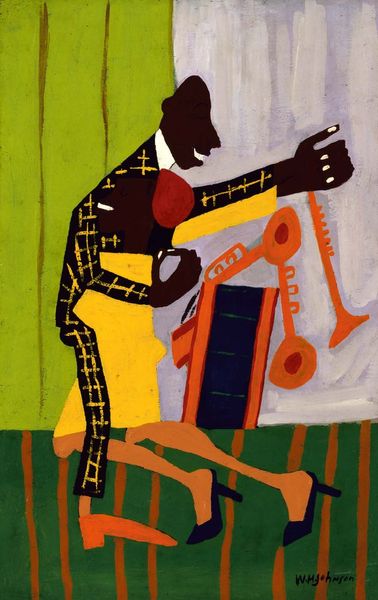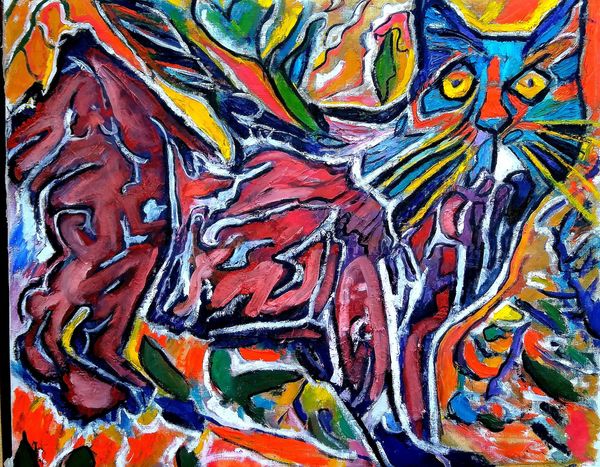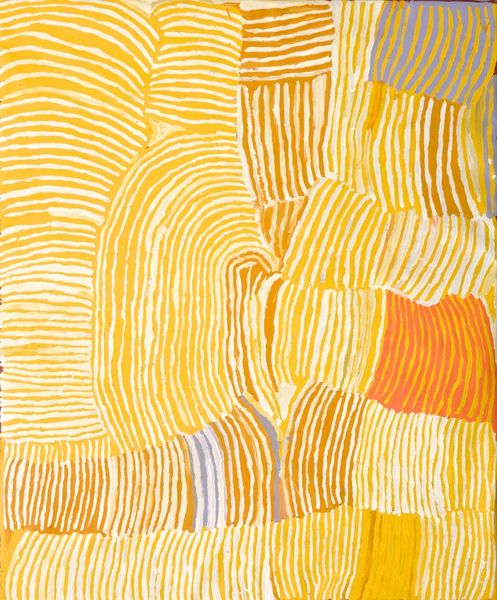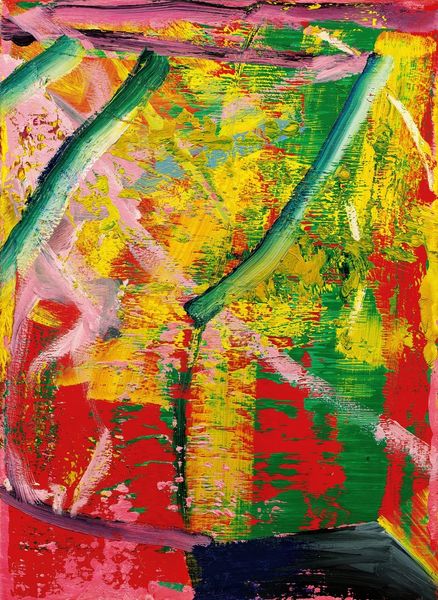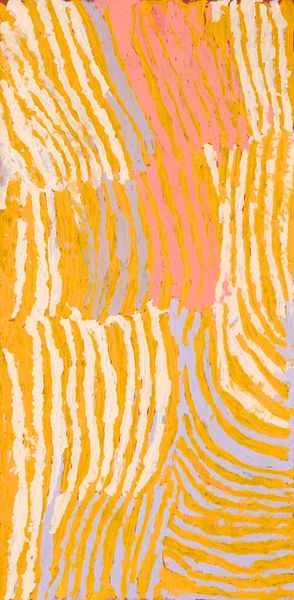
Copyright: Ronnie Landfield,Fair Use
Editor: So here we have Ronnie Landfield’s "Yellow Flower Painting" from 1973, made with acrylic paint. It definitely has that bold, Fauvist color palette. The impasto is so thick you can practically see each brushstroke. It has a happy feeling to it. What strikes you about this piece? Curator: What grabs me is precisely that tactile quality, that evident labor in applying the paint. Think about the materials: acrylic, a product of the post-war chemical industry, readily available, inexpensive relative to oils. It allowed for this almost sculptural buildup of pigment. Is Landfield celebrating industrial production through mimicking natural forms like flowers? Editor: Interesting! So the *means* of production, the accessibility of acrylics, influenced the style itself? It also makes me think of the pop art movement... Curator: Exactly. How does this accessibility impact the perceived value? Consider the contrast with the meticulous detail valued in earlier still-life traditions. This raw, expressive application challenges traditional notions of skill and preciousness. What do you make of the 'flowers' as commodity or metaphor? Editor: I never thought of it that way, seeing it more as a continuation of abstract expressionism, but you are right... How the work challenges established value systems! Are the flowers really even important beyond being a support? It brings the focus to how he puts the paint on the canvas. Curator: Yes! The materials themselves become the message. We move beyond mere representation towards a commentary on the act of making, and the cultural context that enables and values such a process. Editor: Well, now I see more than just a happy flower painting. I see a statement about art itself, about the blurring lines between craft and “high art”, through material and application! Curator: And hopefully a new awareness of art's grounding in materiality and social circumstance!
Comments
No comments
Be the first to comment and join the conversation on the ultimate creative platform.
